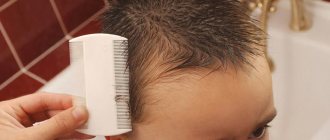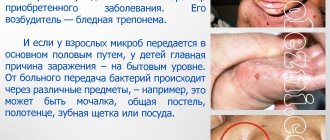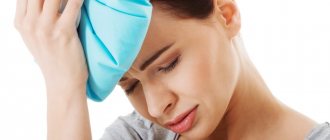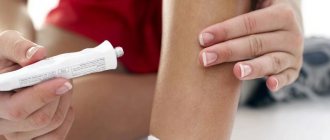Exercises on a massage mat
Children especially enjoy exercises on the massage mat. Because the game begins even before the gymnastics itself begins. This is because the rug needs to be assembled first. Like a puzzle or construction set. And this is already interesting!
And then, exercising on the mat is fun, because boring exercises are not just movements repeated over and over again. This is the real overcoming of obstacles! The child walks in different steps along the embossed surface of the rug, boldly avoiding “impassable puddles”, carefully stepping on his heels on “hot stones”...
While the child is playing, he, without knowing it, is doing gymnastics against flat feet. Please note, dear parents: it is indeed VERY EFFECTIVE. The main thing is to bring the child to the essence of the game, coming up with terribly real details. For parents with imagination, this will not be difficult 
And in this video you will find a hint, or “cheat sheet” on the key points of effective gymnastics. Here is a specific set of exercises and a clear algorithm of actions:
Please remember that for children it is important to present all exercises in a playful way.
In the catalog on the Olvi.ua website you will find various orthopedic massage mats. There are even rugs that will fit into your interior. 
The most popular among children are the popular colored puzzle mats Ortek . Some models, if desired, can be purchased either as a set or individually to assemble an individual obstacle course. The undoubted advantage of such puzzle mats is their practicality: they can be washed, wetted, they are durable and never deteriorate. Those. nothing prevents you from installing elements in the bathroom in front of the washbasin. And there, in the morning and evening, while brushing their teeth, both children and adults will walk on massage mats
Effective exercises for flat feet for children and adults
- Elimination of pain in the feet, provided that physical therapy is performed regularly.
- Strengthening and returning the arches of the feet to their normal position, preventing their further deformation.
- Improving lymphatic drainage of the lower extremities, getting rid of dangerous lymph stagnation.
- Strengthening the ligaments of the feet, which is very important for this disease.
- Improvement of joints - intense movements cause the formation of joint fluid, which ensures normal functioning of joints and relieves inflammation.
- Training and gradual strengthening of the leg muscles, eliminating hypertonicity.
- Acceleration of metabolic processes and, consequently, tissue regeneration, which is important.
- Improved blood circulation in the feet, thanks to which the tendons, ligaments and muscles are better supplied with nutrients and oxygen.
- Rotate your feet in one direction or the other. Do this for 1-2 minutes.
- Sit on a chair and place various small objects on the floor in front of you. Try to grab these things with your toes, arrange them in piles. Then rearrange items from one pile to another.
- Stand straight and place your feet shoulder-width apart. Try to place your feet in one line. Bring your toes together first and then your heels.
- Sit down on the mat, bend your knees, spreading them slightly to the sides. Bring your feet together. As you straighten your legs, try to keep both your toes and heels together. Return to the starting position. Repeat this 20-30 times.
- Place a pencil and a piece of paper on the floor. Take a pencil with your toes and start drawing. Hold the paper with your other foot. Then switch limbs. Do this for 5 minutes.
- Sit on the floor and place a towel under your feet. Lean on your hands and bend your legs. The socks should touch the edge of the towel. Bend your fingers and try to pull it towards you.
- Stand straight, bring your legs together. Rise onto your toes, then return to the starting position. Do this at least 20-30 times. Then repeat this exercise, but stand not on your toes, but on your heels.
- Sit on a chair, rest your feet on the floor. Place a gymnastic stick in front of you, place your feet on it and begin to roll it first forward and then backward. Do the exercise for about 3 minutes.
- Sit on a chair, rest your feet on the floor. Perform movements similar to those of a caterpillar. Curl your toes. Then pull your heels towards them. Then straighten your fingers and bend them again. Pull your heels back up. Move your legs forward as you do so. Do this for 1-2 minutes, first with one leg, then the other, and then both at once.
- Get up and try to walk in place without lifting your heels from the floor. In this case, only socks will work. Do this for about 1 minute.
- Stand straight with your feet together. Try to walk without lifting your toes off the floor. It turns out that you only raise your heels. You can also do this while sitting on a chair. Walk like this for a couple of minutes.
- Sit on a chair and place your feet on the floor. Then try to clasp the other with one foot, then move to the thigh up the shin, and then back down. Do the same with the other leg. Repeat 15 times with each foot.
- Alternate the above-described training with general strengthening, this way all the muscles of the body will be involved in the work.
- Increase the load gradually. In the first stages of implementation, preference should be given to exercises performed in a sitting or lying position rather than standing. This will strengthen and prepare the arch of the foot gradually.
- Do your workouts regularly, every day.
- Practice barefoot so you can feel the movements and get it right.
- Wear loose and comfortable clothes that do not restrict movement.
- Exercise in the morning, not in the afternoon or evening. At this time, the muscles are not yet tired. By the way, with the help of exercises you can stretch your joints and ligaments well before the upcoming active working day.
- Conduct your training in a ventilated area. In this case, all tissues will be saturated with oxygen, and breathing will be correct. But the room should be warm.
- Consult your doctor before starting training, because a complex of physical therapy should be prescribed purely individually. The doctor will first conduct an examination and assess the situation, and then select classes.
- Spend at least 20 minutes a day on training, otherwise you will not get any results.
- Change exercises if pain occurs.
How to do gymnastics?
Training is effective for flat feet of I, II and III degrees. They usually include several types of exercises: with loads on the feet and resistance (for example, squeezing an object with your fingers, rolling it), special walking on different parts of the feet, leg movements, and so on. To enhance the effect, all kinds of devices and rugs with ribbed and uneven surfaces are often used. You can run with flat feet, but not for very long and not too intensely (and only after consulting a doctor).
A set of exercises for flat feet:
Exercise Tips
To treat flat feet with gymnastics to be effective and give positive results, follow our tips and recommendations:
Do not forget that the best treatment for flat feet is its prevention and prevention.
What to avoid with transverse flatfoot
To prevent complications when diagnosing transverse flatfoot, you should avoid:
- standing on your feet for a long time;
- intense sports;
- strong physical activity;
- wearing flat-soled shoes (heels 3–4 cm high are required);
- using other people's shoes, since each person has an individual foot shape;
- wearing models that are the wrong size (small, large, narrow or wide);
- shoes with a platform, wedge and very thin soles;
- constantly wearing sports models;
- shoes that do not have backs, but only thin straps (the foot must be secured).
Most often, transverse flat feet affect the fair sex, not men (8:2), and this is not at all surprising, since women wear narrow stilettos for several hours in a row every day. Thus, in pursuit of beauty, ladies forget about their own health.
How often should I exercise?
A very important point is the frequency of the complex. According to physiologists, during the exercises themselves, destruction and weakening of the ligaments occurs. In response to this, the body turns on repair mechanisms and gradually not only restores the ligaments to their previous state, but also achieves some additional hypertrophy and strengthening. This mechanism is called supercompensation. Then, if the achieved results are not supported by the next portion of exercises, the ligaments return to their original state. Our task is to structure the training process so that each workout falls at the supercompensation stage. The ligamentous apparatus is completely restored after maximum load in approximately 7-9 days and remains in the supercompensation phase for 10-16 days. Based on this, we can conclude that the optimal frequency of training will be approximately once every two weeks. But this applies to extreme training that only trained athletes can perform. It is impossible for the average person to achieve such a level of tension during exercise, and the degree of damage to the fibers in the ligamentous apparatus will be much less. Therefore, to achieve the effect, training must be done more often.
Alternatively, the diagram could look like this. While the volume of loads is insignificant, we perform a set of exercises every day. As the load increases, we switch to three times a week. As soon as the tension becomes extreme, we move on to one workout per week or even two weeks. A good criterion for choosing the right frequency is to improve results and increase loads in each workout. Otherwise, it is better to reconsider the training scheme.
In the case of childhood flat feet, the criteria will be different; here you need to focus on the degree of effort of the child and his age. It is best, of course, to trust a competent physical therapy instructor who will select an individual training regimen for the child, teach the correct exercise technique and motivate the child.
About the benefits of physical therapy in the treatment of flat feet
There are several answers to the question of how to correct flat feet in adults, but exercise therapy exercises remain the most effective tool. Physical therapy can significantly slow down the development of flat feet or even help completely get rid of the problem. And you shouldn’t delay your studies.
Exercises for the treatment of flat feet of the 1st degree can show brilliant results in a short time, while even the best exercises for flat feet in adults of the 3rd degree may not give the desired effect, and in this case, surgical intervention will be required.
Therefore, there is no need to wait. Even if you don’t have flat feet, such exercise won’t hurt: firstly, it will eliminate the risk of developing the disease in the future, and secondly, it has a beneficial effect on posture and the musculoskeletal system as a whole.
Great news for those who decide to take up exercise therapy to prevent flat feet: you can do exercises for flat feet at home. But in any case, you can start exercising only after an examination and an appropriate prescription from the attending physician.
Flat foot test
You can determine if you or your child has flat feet using a fairly simple test. Take a sheet of paper and stand on it with your bare feet, after lubricating them with something greasy, such as oil. Make sure that your body weight is distributed evenly. If you have absolutely no problems with your feet, then you will see the following picture:
If you receive a print similar to the one shown below, consult a doctor as soon as possible. He will help you understand your problem and make the correct diagnosis.
Please note that in the absence of flat feet, the big toe should form one straight line with the heel. Patients who have flat feet often experience ingrown nails. Also, the presence of flat feet can be indicated by an irregularly shaped foot, as well as slightly curved toes. One of the consequences of flat feet is a protruding bone on the big toe. Flat feet lead to the appearance of various unpleasant symptoms such as “heel spurs” or calluses. This fact is worth taking note of for people with problem feet - perhaps the reason for your numerous calluses lies not in your shoes, but in the irregular shape of your foot. There is only one way to find out - by visiting an orthopedist. Remember that it is never too late to see an orthopedist, even if you are quite old.
We recommend that you familiarize yourself with the following signs of problem feet:
- wear and tear of your shoes on the inside;
- the wide dimensions of your feet do not allow you to fit into your favorite shoes;
- constant feeling of fatigue in the legs when walking;
- an unexpected feeling of discomfort when wearing high-heeled shoes;
- the appearance of swelling, pain or cramps in the legs.
If any of these signs are found in you or, more importantly, in your child, then seek help from a doctor immediately. Remember that flat feet are much easier to eliminate in childhood, when the skeleton has not yet completely ossified.
Preventing the development of flat feet: how to get out of the risk group
You need to understand that the best treatment option for any disease is its prevention. And flat feet in this regard are no exception. Preventative steps to prevent flat feet should begin to be taken when the child is three years old: at this age it is necessary to monitor the ligamentous-muscular system of the legs and feet, preventing possible problems with the help of exercises to strengthen the foot with flat feet.
Of course, the prevention of pathology is expressed not only in performing exercises to correct transverse or longitudinal flat feet, but also in proper physical education of children, in local and general hardening. It is also very important to choose the right shoes wisely: they should fit tightly around the foot, but not squeeze it, and be elastic and flexible to the required extent. It is better to choose shoes with small heels and laces.
Among the actions that can be very useful in preventing flat feet, we highlight walking barefoot on uneven surfaces: ribbed boards, sand, pebbles. Walking on grass has a very beneficial effect on the entire body. An important point both in the prevention and treatment of flat feet is daily water treatments for the feet: these can be herbal or salt foot baths. Contrasting water procedures are very useful - dousing your feet alternately with hot and cold water. Finally, do not underestimate the benefits of swimming: swimming, especially crawl style, has an excellent effect on the development of children's musculoskeletal system.
All the above actions will be very good if we are talking about the prevention of flat feet. If the disease begins to manifest itself, these actions will not be enough to cope with it. In this case, you will need to regularly perform exercises to eliminate flat feet: to strengthen the ligamentous-muscular system, it is necessary to perform gymnastics for the lower extremities daily.
Flat feet: symptoms, consequences of advanced disease
Flat feet is a deformation of the foot with a characteristic lowering of its arches.
Flat feet can be congenital or acquired; in any case, ignoring the problem leads to unpleasant health consequences: the inner edge of the foot drops, which leads to stretching and weakening of the ligamentous-muscular apparatus of the feet, and this in turn changes the position of the bones. People diagnosed with flat feet often complain of pain in the calf muscles and feet after walking, and fatigue at the end of the day. Reduced spring function of the foot (elasticity) ultimately leads to headaches. If the disease progresses, the foot expands, flattens, and swelling and pain in the legs become constant companions of a person: patients complain of regular headaches and discomfort in the lower back. Further more: the gait loses its firmness, elasticity, becomes heavy, difficult, and ability to work decreases. People with flat feet cannot play sports. They are forced to buy special orthopedic shoes or, if they are too expensive for them, regular shoes, but several sizes larger.
What are the causes of transverse flatfoot?
The most common reasons that can provoke the development of transverse flatfoot (photo above) are the following:
- Bad heredity.
In this case, the disease is congenital and is called “aristocratic foot”. It is caused by weak muscles of the arched vault. A person with this pathology can live a full life if he wears comfortable shoes and adheres to a healthy lifestyle.
Recommended articles on the topic:
- How to massage the abdomen for weight loss: different techniques for health and beauty
- Stone massage: description, benefits, methods
- MRI of three parts of the spine: when is it necessary and what are the features of the procedure
- Anomalies associated with the ligaments and muscles of the foot.
If a person has impaired development of ligaments or muscles, leading to incorrect placement of the phalanges of the fingers, this can cause them to spread and ultimately provoke transverse flatfoot.
- Excess weight.
The flattening of the foot in this case occurs due to excessive stress on its ligaments and muscles.
- Professional activities that involve increased pressure on the foot.
If a person has to stand for a long time during the working day, the foot becomes unbalanced, which ultimately leads to acquired flat feet. Most often, this is observed among teachers, lecturers, hairdressers, etc.
- Injuries.
In most cases, it is injuries that cause flat feet in men, since they (unlike the female part of the population) more often experience bone fractures, sprains and muscles, dislocations, and other similar troubles.
- Wearing uncomfortable shoes.
Flat feet are often caused by poor foot hygiene, high heels, and improper shoe lasts. When a representative of the fair sex wears high-heeled shoes, she redistributes the weight of her own body so that it falls on the forefoot, which over time leads to bone deformation.










